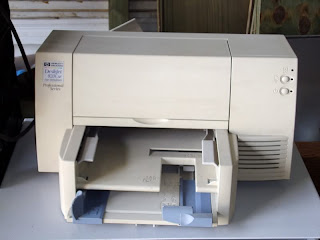Before determining the best laser printer that is suitable with your needs, the first thing you should do is understanding the basic knowledge about printer. Printer has two ways to produce a picture, an inkjet printer produces a picture by spraying very small dots of ink onto the paper while a laser printing device produces a picture by throwing powdered ink to paper which goes by an electrically charged drum. If you have needs to print more photos or graphics and less text-based documents, you had better buy an inkjet printer. But if you have needs to print so many text-based documents, a laser printer will be the best choice for you.
Choosing the right device for printing is very important because if you frequently print many documents then you use an inkjet printer, you will spend more money for the cartridges over the expense of toner over the lifetime of a laser printer.
Monochrome or Color Laser Printer
You can find a black and white laser printing device for less than $150. These types are usually cost-effective plus cheaper to maintain as compared to inkjet printers. A color laser printer is significantly more high-priced, and it is right here that you can be teased to select an inkjet printer as an alternative. Remember that the first investment pertaining to color toner cartridges enhances the upfront price of a color laser printer, yet colour printing is going to definitely cost cheaper per page than inkjet printers. Although some color laser printers can handle to print photographs, the picture quality will be substantially worse than inkjet printers. That is why if you have strong intention to print photo, it is recommended that you select an inkjet printer.
Print Quality
A laser printing device can yield crisp and razor-sharp text output associated with simple graphics (grayscale) yet it doesn't mean you need to neglect resolution specifications entirely. Printer resolution is usually assessed in dots per inch. If you have printer which has higher resolution so it will result in sharper and crisper the print job. That is why it is worth taking into consideration if you will print graphics. Monochrome/grayscale laser printing device has resolution at 1200 by 1200 or 600 by 600, however these scales are usually more than enough regarding printing text and graphics. The resolution of Color laser printing device is often as high as 2400 by 1200, that increases the quality of the colour print.
Printer Memory
Memory space decides how fast your printing device prints plus the quality of the prints it creates. Printing devices with laser technology save documents within memory. More memory enables you to print a higher resolution at quicker speeds. If you deliver a high-resolution works to your printing device yet do not have the memory to take care of it, the printer instantly sets the work's resolution to check the actual printer's capabilities.
Memory space upgrades are relatively affordable, therefore if you select a cheaper laser printing device along with less memory, search for one which can allow memory space upgrades, particularly important if you will do network the printer with several users in your workplace. The majority of expensive laser printing device is equipped with at least 64MB of memory space. If you are purchasing for a large business with many print jobs, select a laser printer which can be upgraded to 128MB. Once again, if velocity is key element, take into consideration to buy the model with additional memory space.
.jpg)




